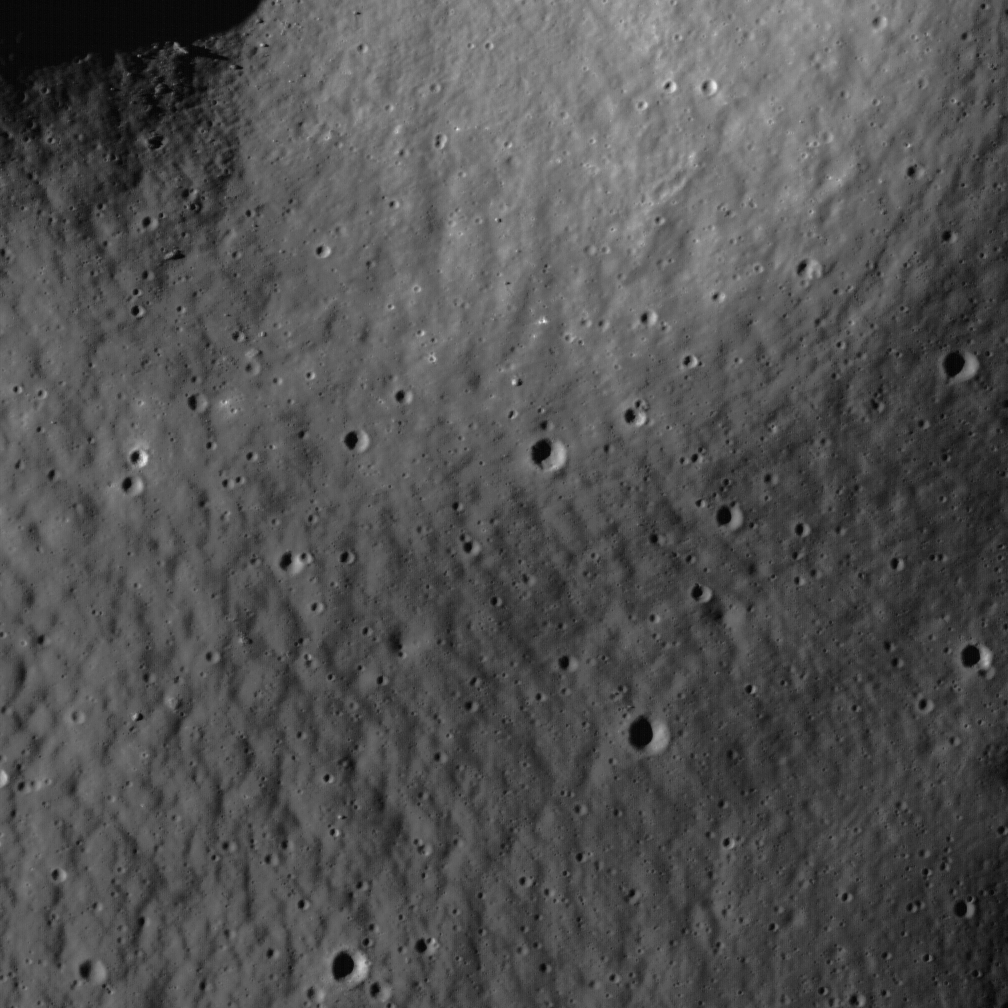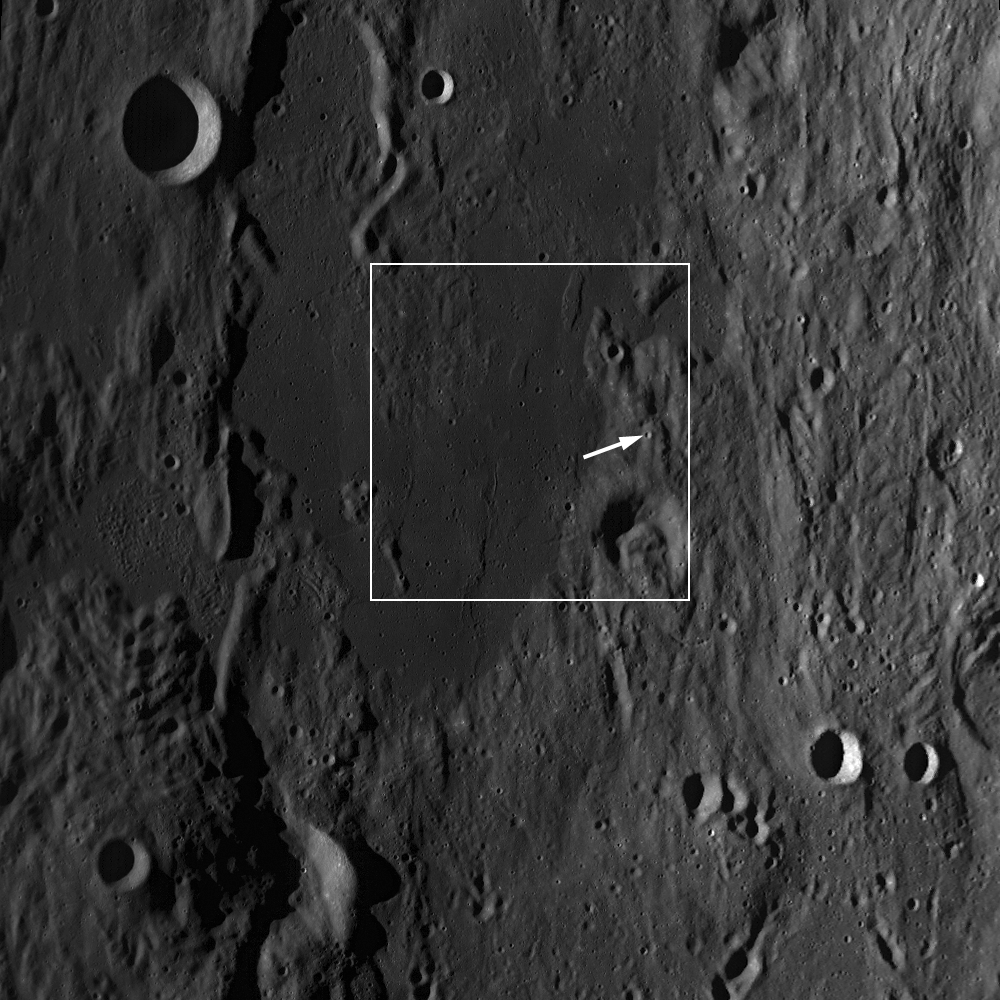
Much of the Constellation Mendel-Rydberg region of interest is located in a terrain known as a "cryptomare." Cryptomaria are mare basalt volcanic deposits obscured by superposed materials usually of higher albedo. The obscuring materials are typically the ejecta of later-forming craters and basins, which blanket the older mare basalt. In the case of Mendel-Rydberg, much of the material covering the older mare may have been ejecta from the Orientale basin-forming impact event, which occurred hundreds of kilometers to the north. The fact that the covering ejecta can have varying compositions, thicknesses, and albedos complicates the task of making an inventory of the amounts, composition, and history of lunar volcanism. Consequently, cryptomaria are of high scientific interest (see also the Balmer Basin region).
The full-resolution NAC view above illustrates the complexity of the highlands surface in the eastern portion of the Constellation region of interest. Here, the cover of fragmental material, or "regolith," displays the so-called "elephant skin" texture (also seen here and here) which is probably the result of slow movement involving thermal cycles of the lunar day-night and seismic shaking from meteorite impacts. The high resolution LROC images and accurate topographic information will help sort out the causes of this long-known surface characteristic of parts of the lunar surface.
Browse the full-resolution NAC image below!
Published by Peter Thomas on 13 May 2010
